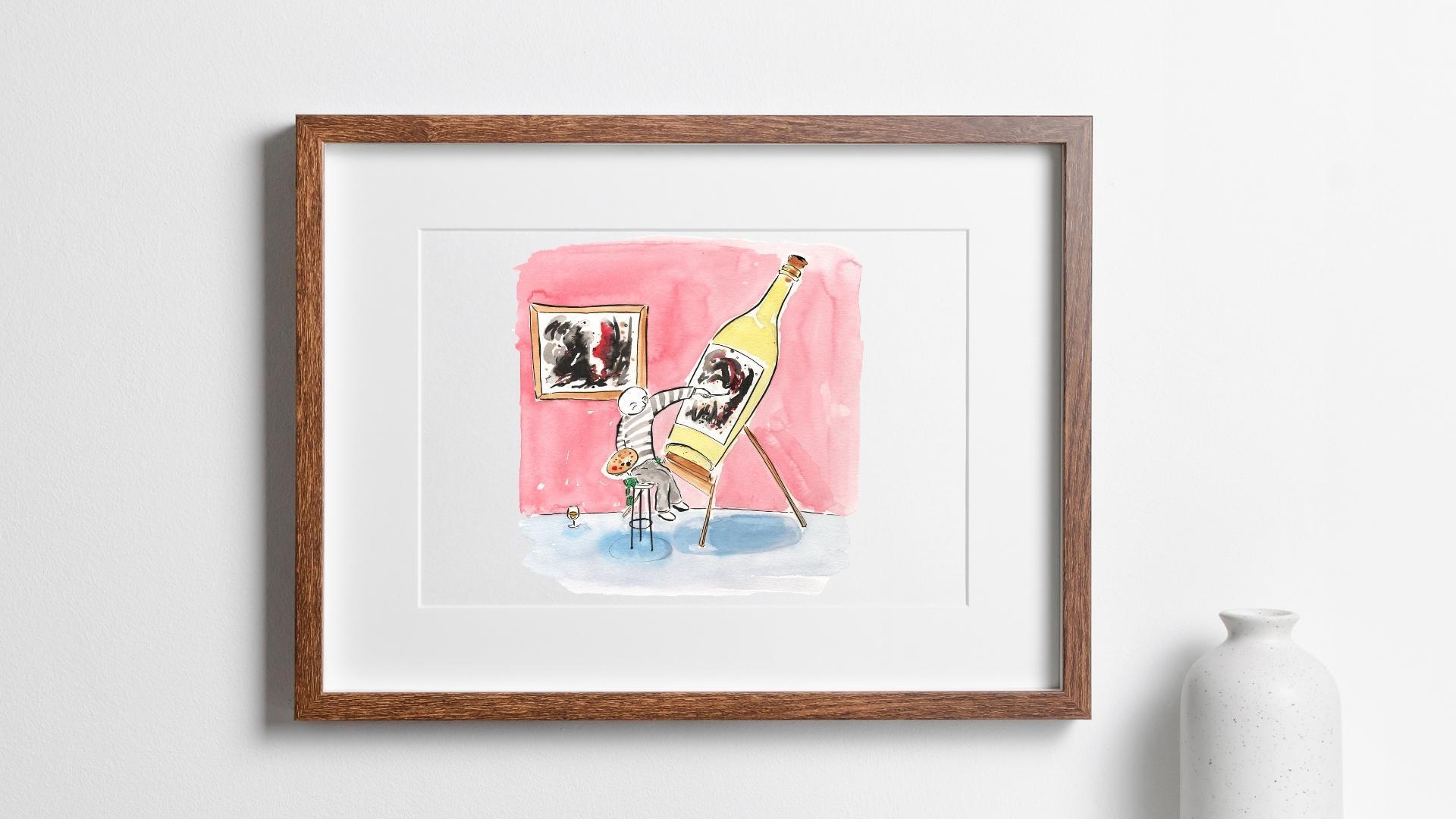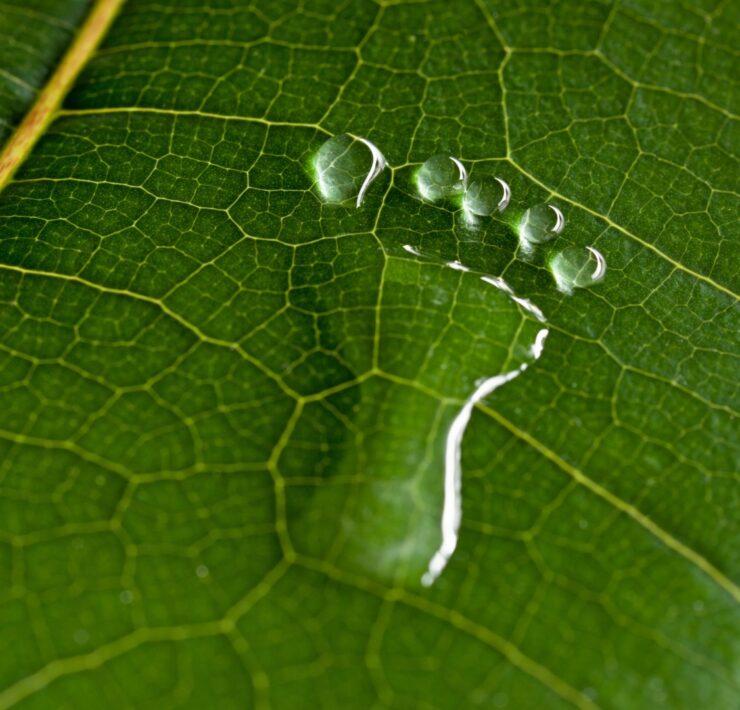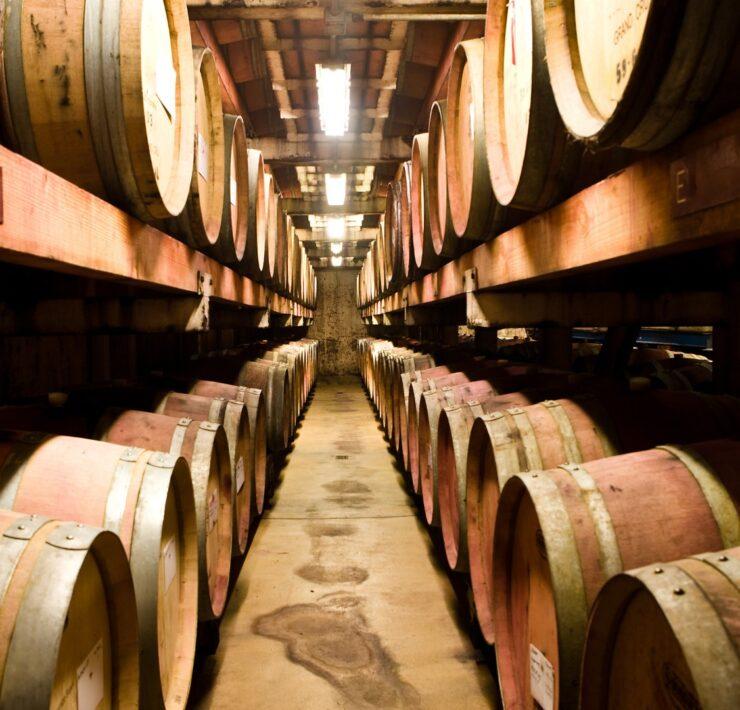Perusing the shelves of a wine shop, it’s not surprising that consumer attention veers toward a splash of unexpected color or an eye-catching illustration. According to a 2019 article in Frontiers on Psychology, wine labels influence consumer choices. But what about the growing trend in artist series wine labels?
When weighing the myriad of costs associated with wine production, wine producers share whether artist series wine labels turn a more significant profit.
Cost
Winemakers admit that fine wine art labels cost more to produce than regular labels. “Because we use our small lot reserve wines for our Cellar Select Artist Series collection, the production costs for both winemaking and packaging are higher compared to other wines in our brand portfolio,” says Tiffany Stetson, general manager of DTC sales at Goose Ridge Estate Vineyard and Winery in Washington State. Stetson estimates that Goose Ridge’s artist labels run approximately 50% more than their standard labels.
Lange Estate launched its second label, Trouvère in 2021 and features the work of Santa Barbara artist Mary Heebner. “We didn’t set out on this journey with any set ideas about growing sales,” says Christine Havens, the winery’s marketing director. “We knew that we wanted to redesign the labels for Trouvère. It’s something our founders and team had been discussing for a long time,” she says. “With our broad market labels, we spend a lot of time thinking and talking about the style and ethos of those wines. There is a defined style there that feels like it’s the fingerprint of the winemaker. We haven’t tried to pin Trouvère down in that way. It’s a passion project for sure, and it fulfills a need to be curious and creative and explore outside of the boundaries of the Willamette Valley.”



Despite streamlining processes, Havens estimates the Trouvère artist series labels still cost about 65% more to produce due to lower volumes. “We chose the same paper stock and used the same printing techniques that we employ on our broad market labels,” says Havens. “Both have an embossed logo and spot UV varnish in areas of the design we wish to highlight.”
Cost of Originality
“If you pay for original artwork, it can get expensive,” concedes Santa Barbara County-based Fiddlehead Cellars founder and winemaker Kathy Joseph. “It all depends on the arrangement with the artist. This is especially true if costs only apply to one label, for instance, a one-vintage bottling. Also, the cost is an additional consideration if you want to own the art.”
Further, standard artwork designs typically incur a one-time charge. This charge may amortize across many labels. ”I am lucky to have a sister who is a painter and allowed me to select at no charge from her portfolio,” says Joseph. “Although I do not own the art.”
Choreography
Moreover, crafting art labels requires careful choreography. “When [founder] Don Lange pulled me aside to show me Mary Heebner’s illustrations and paintings, I immediately felt a real connection to her work. After spending a lot of time corresponding by email and over the phone, we both felt like we had great synergy,” says Havens. “The process for this project has been highly collaborative.”
Initially, the winery sent wine samples to the artist to taste. Next, the team talked. “There was a lot of conversation around each label,” says Havens. “A lot of time was spent looking at mock-ups (of artwork) before collectively arriving at the right design for each varietal.”
Havens estimates that production took over a year, from start to finish. “We ended up with a series of four. Each label represents a different varietal, and the pieces we chose capture each wine’s energy and personality,” says Havens. “Her work is deeply grounded in the places she’s traveled to and nature. She creates these haunting landscapes that are abstract and elemental and beautifully choreographed. The fit felt very natural because wine is very much a reflection of the place it’s from.”
Local Recognition and Federal Bureaucracy
Goose Ridge operates tasting rooms in Richland, Walla Walla, Leavenworth, and Woodinville. They started their Cellar Select Artist Series program to support these local communities. Every year, a different local artist from each of the four towns is selected. “The club members can connect more with our Washington community through each sip,” says Stetson.
Stetson works closely with Molly Monson-Stutesman, Goose Ridge’s vice president of sales and marketing, locating local artists whose works align with the winery’s vision and aesthetic. Selected art pieces must fit the label, the wine, and the bottle shape. The Monson family, who own the winery, select and approve the final artists and label artwork. Artists maintain minimal involvement in the Goose Ridge label-making process, “primarily due to the particularities around wine and wine labels,” says Stetson.
At Fiddlehead Cellars, Joseph also engages with the US Alcohol and Tobacco Tax and Trade Bureau (TTB) on final label approval. “Always the TTB, but up until that point is it me – the owner, winemaker, marketer, decision-maker,” she says. “Occasionally, I might ask for layout assistance from a graphic artist, based on my vision.”
Soulful Integration
Clearly, artists’ wine labels require more capital and care than regular labels, which undercuts profit. So why craft them?
While Joseph acknowledges her art labels may not increase wine sales directly, they add value. “In my case, art labels add diversity to the portfolio. It gives another opportunity to present something new, especially to existing customers.”
Art labels also offer Joseph an opportunity to integrate family ties. Sister Jody Joseph, who maintains studios in Italy (Umbria) and Toronto, specializes in still life and landscape painting. Both subjects lend themselves well to the hock bottle shape of the Fiddlehead Cellars Grüner Veltliner series. “In my Grüner Veltliner Estate, Reserve and Late Harvest series, the art is tied to a new wine to the portfolio, and one that is not a mainstream varietal,” she says. “I was hoping for an added dimension to the look of the brand, as well as roping in family ties.”

For Lange Estate, the Trouvère Artist’s Series offers something soulful. “Mary’s works have a rhythm and cadence,” concludes Havens. “If you look at the flavor profile of the ‘Indigene,’ which is made from a mutation of Pinot Gris that is grown on our estate, that wine has a lot of pent-up, nervous energy.”
The piece the winery chose for that label contains swirling tones of gold and green. “It’s like sunlight reflecting on the water,” Havens says. “It asks the viewer to consider what’s above and below the surface. I think it embodies the expression of this wine and its sensory arc in a remarkable way.”
Ultimately, artists’ series wine labels fill a creative need in consumers and winemakers alike, regardless of the cost.









